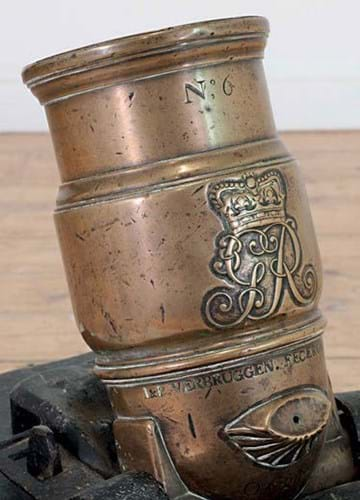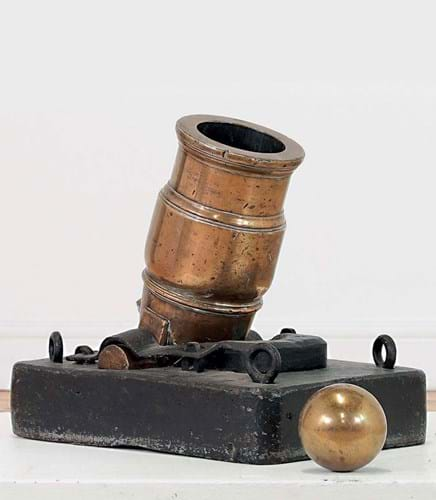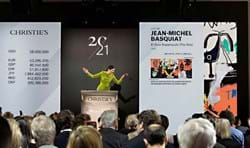Sold to a UK private buyer, the rare example of British military ordnance from the time of the American War of Independence had been estimated at £2000-4000 in the in Stansted Mountfitchet auction.
Dutchmen Jan (1712-81) and Peter Verbruggen (1735-86) played an important role in the story of the British Army and the industrial revolution.
Gun founders in The Hague, father and son were headhunted by the British Board of Ordnance in 1770 to modernise production at the Royal Arsenal, Woolwich. Appointed joint master founders at the Royal Brass Foundry, they undertook a full refurbishment of the factory, installing new furnaces, casting pits and a horse-drawn barrel-boring machine considered the UK’s first industrial lathe.
It proved a more reliable production method. Cannons, mortars and howitzers were made at the foundry from 1774 with the proof record much higher than in earlier years.

The George III brass mortar with cast armorial bearings and moulded girdles signed for Jan Verbruggen, £49,000 at Sworders.
Relatively few pieces of bronze ordnance from the 18th century have survived: most were recycled; others were sent to the bottom of the sea. It is thought that fewer than 30 pieces by Verbruggen now exist, most in museum collections or still in situ in colonial outposts.
Among the treasures of the Rijksmuseum is a set of six miniature scale models of bronze guns signed by Jan Verbruggen. The models (two mortars, a howitzer and three cannon) are bisected longitudinally to show the inside of the bore.
Verbruggen’s House, the home built in 1772 for father and son, still stands at Woolwich.
Sworders’ mortar came for sale on December 13 as part of the contents of Middleton Hall in Mendham, Suffolk, with an earlier provenance to BADA dealer Suffolk House Antiques in Saxmundham.
It is signed I&P Verbruggen Fecerunt and inscribed No. 6 and AD 1779. The cast-iron base measuring 17 x 15in (44 x 37cm) is the original, with the bronze cannonball a welcome later addition.















